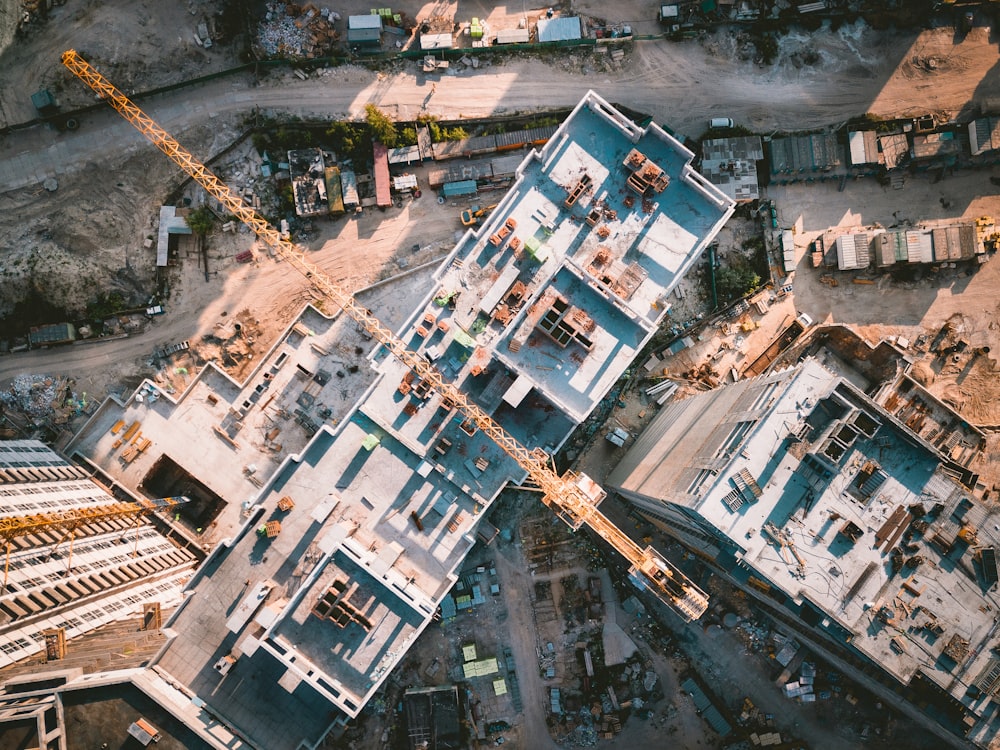Did you know that the global construction market will be worth $15 trillion by 2025 at a CAGR of 7%? That is a huge market. And yet it is a fragmented industry with a complex supply chain and labyrinth of stakeholders, all working towards building infrastructure. With so many moving parts to coordinate, management has been the key to success in the field – until now.
With Artificial Intelligence, we are not only able to plan for the future but also manage every stage of development right from planning through execution as well as shutdown. It has the potential to completely transform the way infrastructure is developed and built. From predicting demand for new construction projects to designing materials and even constructing buildings, AI is changing every aspect of the infrastructure development process.
In this article, we will take a look at some of the ways AI is transforming infrastructure development. We will start by looking at what makes traditional management of the process so difficult. We will then discuss how AI is making management of the development process more efficient than ever before.
Let’s get started!
Traditional Management of Infrastructure Development Processes
Traditional management of the process of infrastructure development is a complex and difficult task. It involves coordinating all stakeholders such as construction companies, suppliers, designers, and even the local community.
The process starts with thorough planning before any construction can begin – manpower and resources must be allocated based on demand, machine power must be planned for and even weather conditions taken into consideration.
Stakeholders involved in the process are often working towards different goals and demand different timelines, which can lead to delays or even failures of projects. For example, suppliers may be pressured by time constraints to cut corners, which can result in substandard material being used for construction.
And it is not just building but also running infrastructure like railways and roads that require careful management. The demand for these services is often unpredictable, which makes it difficult to plan for them in advance.
AI’s Role in Infrastructure Development Processes
There is no doubt that AI is having a major impact on the infrastructure development industry. In fact, a number of studies and reports have shown that the adoption of AI applications within the infrastructure sector is growing at a rapid pace.
Some of the major drivers of this growth include the following:
- Increased demand for new construction projects: The global population is growing rapidly, and this is driving demand for new construction projects. AI can help to predict and meet this demand by forecasting future needs and trends.
- The need for improved efficiency and safety: The infrastructure development process is often slow, expensive, and risky. AI can help to improve efficiency and safety by automating tasks such as material design and construction.
- The need for innovation: To stay competitive in the global market, construction companies need to focus on innovation and efficiency improvements. AI provides infrastructure developers with an opportunity to do just that.
- The demand for heavy data processing: The large amounts of data generated by infrastructure projects, such as location-based services, requires advanced computing power and capabilities if it is to be processed effectively. AI can help achieve this by completing complex tasks in a fast and efficient manner.
The 5 ways AI is transforming Infrastructure Development
It’s not just about the sheer number of AI applications. It’s also about where these applications are being used to make a difference.
So, here are 5 ways in which AI is transforming the infrastructure development process:
1. Project Design and Planning
The planning and design phase is a critical one in the infrastructure development process. This is due to the fact that most of a project’s budget and timeframe is determined during this phase. As such, significant changes made during this stage can lead to major cost overruns or delays that affect other phases of the project.
AI can help to overcome this issue by incorporating more accurate data on the project’s lifecycle as well as allowing for optimization of resources and processes such as material design, scheduling, and planning.
By leveraging historical data on past projects as well as relevant geospatial data, AI models can create accurate models of the various processes involved in the project lifecycle. An example would be a model which can help to determine what an optimal material composition for a specific location may be as well as how long it takes to construct a project at that particular location.
The machine learning capabilities of AI are also being utilized in project management software which allows for better planning and optimization of tasks involved in construction planning through “Dynamic Scheduling”.
The Dynamic Scheduling Technology reduces errors and ensures that organizations meet business objectives by collecting data on all aspects of a given task (manpower, material requirements, budget) and then managing them across multiple worksites allowing for real-time assessments and analyses on resource allocation.
2. Monitoring and Maintenance
The monitoring and maintenance phase is another critical phase of the entire project lifecycle. AI is being used to improve safety, efficiency, and reliability during this stage. For example, IoT sensors are being used to monitor assets throughout their lifespan ensuring that they are operating at optimal levels.
This ensures that activities such as construction are completed safely without compromising the performance of any given asset. Similarly, real-time data can be collected on building information systems which can then be analyzed by AI tools in order to improve decision making on how best to maintain a structure throughout its lifespan.
AI-based systems are also being developed which allow for predictive maintenance through analyzing sensor data on various systems across a given infrastructure network including everything from environmental factors (climate change) to structural elements (soil conditions). This allows for preventative repairs to ensure that assets are maintained in optimal working conditions for as long as possible.
Basically, this means that there is an ongoing need for :
- monitoring system performance;
- maintaining and fixing damages;
- detecting early signs of deterioration, damage, defect, or malfunction.
3. Rethink Risk, Regulation, and Safety
The main role of AI in this field is to apply advancements made in the field of machine learning to create more accurate risk analysis models – allowing for better decision-making processes when it comes to infrastructure safety measures.
AI can play a significant role in risk assessment by analyzing costs and future scenarios based on past experiences. For example, AI is being used in risk analysis software which allows for the creation of models that can offer insights into various types of risks involved in a construction project including financial, operational, and technological factors.
These models can then be used to create reports which indicate how likely it is that a given project will fail based on the potential issues involved at each stage of its lifecycle. These reports can then be used to determine which projects would need an additional review from a financial perspective in order to indicate whether or not the benefits of a project outweigh its risks.
Also, by learning from past cases or known hazardous events, AI can help reduce the number of accidents by highlighting risks that need immediate attention. This has the potential for reducing life loss due to preventable incidents as well as loss of property and reduction in liabilities held by organizations. The machine learning algorithms can also analyze the compliance of existing regulations and how they may be applied to specific projects as well as with future projects.
4. Construction processes automation
In most cases, manual labor is replaced by automated systems in the construction of infrastructure projects. This approach has the potential for reducing cost and increasing efficiency since it requires less manpower and can be done at a larger scale.
AI is helping to improve the current automation processes by creating models which allow for :
- improved resource allocation;
- reduced traffic congestion on-site as well as during transportation of resources through AI-powered robotics;
- more accurate management of tasks by taking full advantage of 3D data from various sensors placed around the worksite.
5. Sustainability and Resilience
Sustainability is a key aspect of infrastructure development and AI has the potential for helping organizations to integrate sustainable practices into their internal operations. The technology can help by providing information on the environmental impact of projects through :
- environmental footprint analysis;
- green building design measurements;
- energy consumption indexing.
The machine learning capabilities of AI are also being used to measure resilience in infrastructure systems. This is done by analyzing how past incidents, natural disasters, or even social unrest could impact structures with the goal of identifying areas that need further preventative measures. These models use data from similar events in order to create simulations that can be used for planning purposes.








